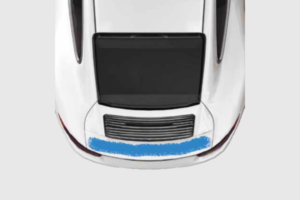Printed Antennas and Internet of Things (IoT) Integration
Connected machines are already a reality, transforming vehicles into smart nodes of a rapidly expanding and interconnected digital ecosystem. Communication between vehicles, infrastructure, and personal devices is critical to improving safety, efficiency, and delivering new driving experiences. Therefore, Printed Antennas are a key technology for the integration of the Internet of Things (IoT) into vehicles.
Compared to traditional antennas, Printed Antennas are characterized by their significant lightness, flexibility and integration capacity. This saves space, reduces the presence of rigid components and, therefore, improves design and aerodynamics. In addition, with specially developed conductive materials, they ensure stable and unfailing signal transmission, which is particularly important for its application in connection with IoT.
A stable vehicle connection allows for the valorisation of car information for the benefit of the user rather than remote monitoring.
Alper’s approach based on innovation and sustainability enables the production of Printed Electronics solutions that accompany the evolution of mobility, promoting the creation of smart, efficient and sustainable vehicles.
Printed antennas and future application prospects in the Automotive sector
The Automotive sector is constantly developing and is committed to meeting the ever-changing needs. As mobility technologies evolve, connectivity is becoming increasingly critical, changing the way vehicles communicate with each other and with the environment around them. Printed antennas, thanks to their lightness, flexibility and integration capability, will play a crucial role in this context.
In autonomous vehicles, the ability to receive and send real-time data will be important to ensure safe and efficient automated driving. Printed Antennas will ensure stable and reliable communication between sensors, AI systems and digital infrastructure, helping to reduce the margin of error and improve the mobility experience.
Real-time monitoring will be another decisive aspect for progress: information collected from vehicles can be analysed to optimise energy consumption, prevent breakdowns and increase road safety. A network of efficient antennas will enable intelligent data management, supporting the development of advanced services for drivers and vehicles.
Without neglecting the Smart Roads and connected infrastructures that will surely benefit from this technological evolution. The integration of antennas directly into vehicles will enable interaction with intelligent traffic lights, information panels and traffic management systems, helping to reduce congestion and improve road safety.
The evolution of connected mobility requires revolutionary technological solutions that deliver high performance and uncompromising integration. Alper’s Printed Antennas represent the future of automotive connectivity, combining innovation, sustainability and efficiency.
 In the automotive sector, advanced connectivity is now a fundamental requirement to ensure safety, efficiency and high performance. From communication antennas to infotainment and navigation systems, the demand for lighter, integrated and more efficient solutions is constantly growing.
In the automotive sector, advanced connectivity is now a fundamental requirement to ensure safety, efficiency and high performance. From communication antennas to infotainment and navigation systems, the demand for lighter, integrated and more efficient solutions is constantly growing.
